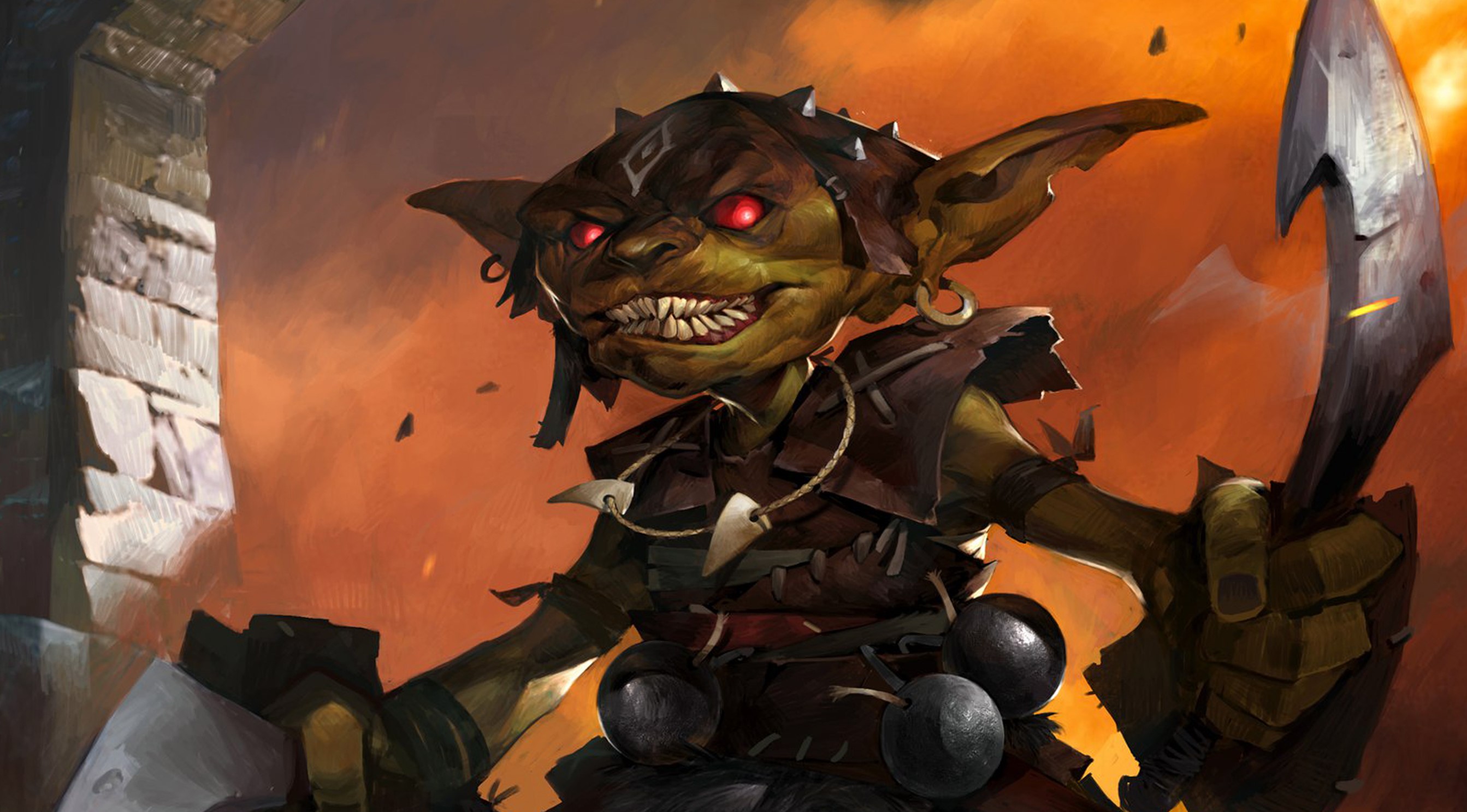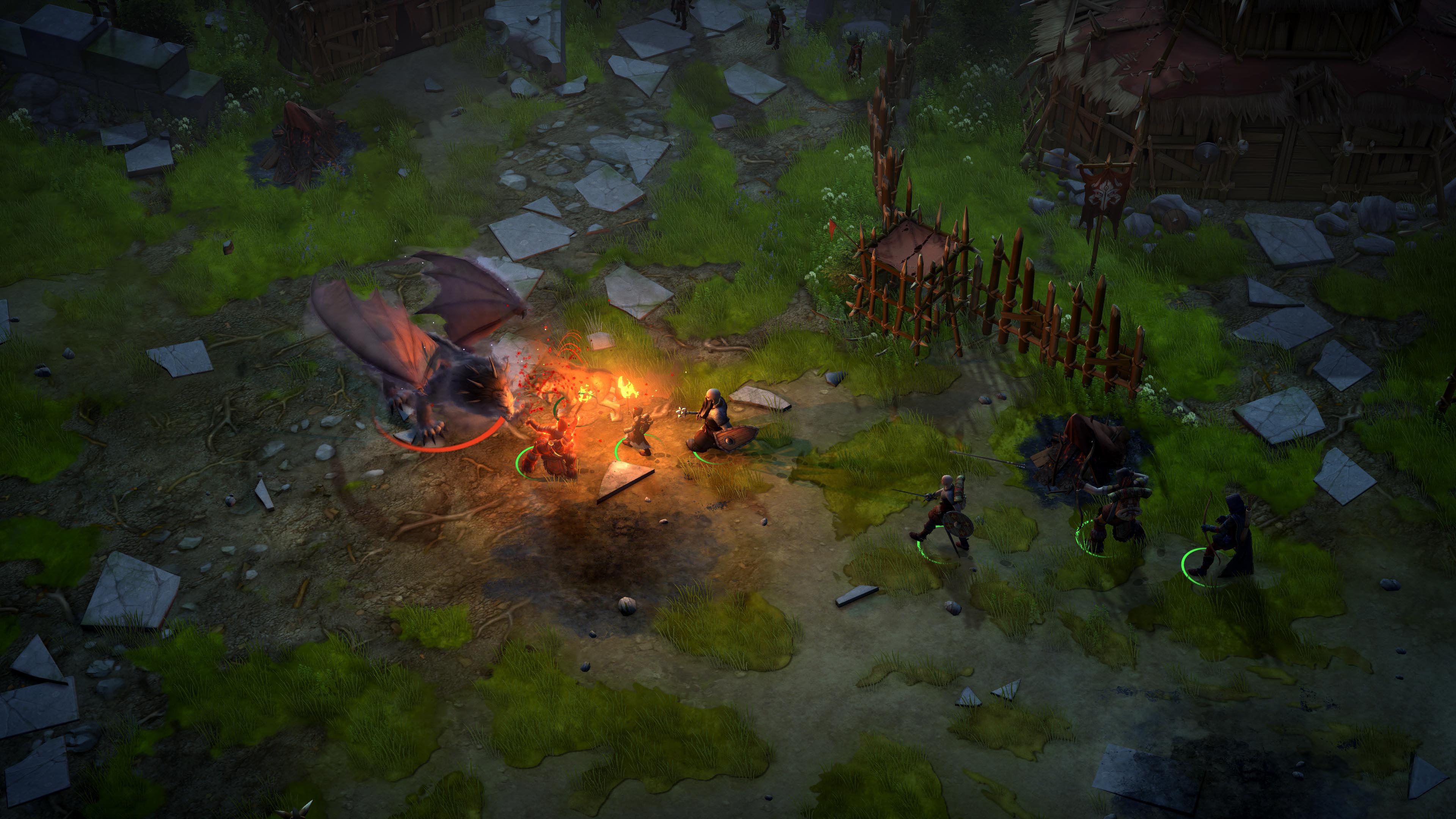Pathfinder: Kingmaker feels like the PC RPGs of old, warts and all
The first videogame based on the Pathfinder tabletop game is a faithful emulation, for good and bad.

Some of my fondest memories come from sitting in a musky living room with five of my closest friends playing Dungeons & Dragons. We're years in, with many adventures long behind us, and we still meet every week to adventure together. During my short time with Pathfinder: Kingmaker, I felt like I was right back in that living room pondering all the different ways I could solve a problem, and more importantly, what my character would do in that situation. PC RPGs have always been about accommodating many play styles, but few have gone as far in channeling the tabletop experience as Kingmaker.
Kingmaker is the very first video game based on the Pathfinder tabletop game—an offshoot of D&D based on the 3.5 edition rules, released in 2009. The team behind it is a group of RPG veterans called Owlcat Games, who worked together on Heroes of Might & Magic 5. But the biggest name involved is narrative designer Chris Avellone of Planescape: Torment fame. Kingmaker is based on an existing module of the same name that takes a party of new characters all the way from level one to 20 over six chapters. The videogame was built using the same broad narrative threads, dropping players into the role of king of a fledgling kingdom in the Stolen Lands, a mostly uninhabited part of the River Kingdoms, a region known for its constant power struggles.
True neutral
Character alignment plays a big role in the dialogue options you’ll have.
Instead of following a main story thread, I was dropped into an area with a full party of six to wander around and get a feel for traversal and combat. My earliest encounter demonstrated the various ways a situation can play out. Two warring factions of Mites, goblin-like creatures pitied by even the lowest social classes in Pathfinder, were squaring off in a field getting ready to brawl as I happened upon them. Both sides itching for my aid, they shared the details of their petty squabble. My dialogue options gave me a lot of leeway—I could inquire further about the situation, decide to side with one of the factions, or insist that it wasn’t my fight. Not knowing enough about either faction, I chose neutrality.
Later on, when exploring the caves inhabited by the Mite victors, I met up with a few of them that had caged up a helpless prisoner from the enemy side. Since I’m not a complete monster, I was able to turn this into a teaching moment for the Mites about cruelty towards their enemy. The lowest of the low have to stick together, after all.
Character alignment plays a big role in the dialogue options you’ll have. As a lawful neutral person, I mostly only had access to neutral options, with some that skewed good or evil. Repeatedly making those choices will slowly move the needle on my alignment over time. It’s neat to see such a faithful representation of alignment that doesn’t feel black and white. There’s a level of nuance and opportunity for neutrality that isn’t often represented in RPGs. I don’t have to be a grand hero or a villain, just someone trying to make it in the world. It’s also appropriate for the premise of building your own kingdom, where a certain level of neutrality could be what your people need to survive.

Combat is a familiar combination of real-time with the ability to pause and issue commands. By default, your party will fight controlled by an AI, but you can seize control and tell them what to do. They seem smart enough to handle low level threats without my input, but when a more significant threat comes around, combat starts to feel more obtuse. Since enemies are constantly attacking just as quickly as you are, pausing the fight doesn’t provide as much insight into how the fight is going as I'd like. Mousing over party members does reveal who they’re currently targeting, but trying to establish the overall narrative of a battle takes more work than it should. This creates some awkward situations: In one fight, my wizard was channeling spells while also being gutted by a sword.
When battle is happening in real time, it feels too fast to micromanage. Pausing helps, but in the end I was doing what a proper turn-based initiative system could be doing better: pacing the combat along in a way that’s tactical but also dynamic. Playing, I recalled the same disjointed feeling in our D&D campaigns, when everyone was trying to do something cool at the same time and we weren’t working together. When a fight started and we rolled initiative, we'd finally slow down and talk through a strategy.
Keep up to date with the most important stories and the best deals, as picked by the PC Gamer team.
Pathfinding
Still, the real-time messiness doesn't take too much away from what overall seems to be a deep combat system. Since Kingmaker pulls straight from the foundation of the Pathfinder tabletop game, it has more than 1000 spells, feats, and skills to mold your party however you like. I’ve always found spellcasting more interesting than melee combat, so I focused on magic. I found plenty of the classics like fire bolt and mage armor, but I was especially delighted when my party entered a dark cave and we needed to light our way.
Someone in my party probably had a torch I could light, but I dove into my wizard companion's spellbook and found Light, a cantrip I had cast a hundred times before on tabletop. Light simply illuminates any object you cast it on. I cast it on my own body to see if that would work and became a walking flashlight.
I love that Kingmaker allowed me to play with the logic of the spell to solve a problem, but I’m skeptical of how deep those kinds of options will go. My party could loot nearby campsites and have full-fledged conversations with any passerby, but I couldn’t just pick up a box and move it somewhere else in the same way traditional roleplay would allow. It’s a small gripe, no doubt, but deep interactivity with objects and the environment, like in Divinity: Original Sin 2, really helps elevate my immersion in the world.

In the pantheon of CRPGs, Pathfinder: Kingmaker feels like a throwback to the classics more than a modern reinvention like Divinity: Original Sin.
Kingmaker has 10 pre-made companions that you can assign to your party of six. Each has a fully written backstory, unique dialogue, and personal questlines. My party included chaotic-evil half orc Regongar, human fighter Valerie, and dwarven cleric Harrim. It was a bit disappointing that Harrim and Regongar play into the class/race stereotypes established by decades of fantasy fiction. Does the half orc really have to be evil, and does the dwarf really have to be a stocky cleric? I’m interested to see how these characters’ stories evolve, and hopefully they challenge the assumptions of their appearance. But since companion alignments are apparently set, it’s unlikely Regongar to become less chaotic over time. In Kingmaker, once an evil orc, always an evil orc, apparently.
Your own character's alignment and the choices you make will have an impact on the relationships with your companions. It’s even possible for a companion to leave you behind, according to creative director Alexander Mishulin. And if one of the written companions doesn’t fulfill your ideal party balance, you can always create a new one.
I didn’t get a chance to try the kingdom building portion of the game that plays a big role in the story, but Mishulin touched on how deep it can go. Players will be working to expand the territory around their piece of the Stolen Lands to make more room for building settlements and establishing trade routes with other nations. Alignment has a lot to do with the outside world's perception of your kingdom. Mishulin described a scenario where playing an evil character would make it a lot harder to form trade relations with a settlement of pious paladins.
In the pantheon of CRPGs, Pathfinder: Kingmaker feels like a throwback to the classics more than a modern reinvention like Divinity: Original Sin. Mishulin estimates that the main story will take at least 40 hours to complete, and an additional 80 hours for all the side content and kingdom building. My time with Kingmaker reminded me of the wonder and unknowing potential of a good tabletop campaign, but I’m also left unsure if its stories will be enough to deal with its muddy combat for dozens of hours. You can check out the game for yourself when it releases on September 25th on Steam and GOG.

Morgan has been writing for PC Gamer since 2018, first as a freelancer and currently as a staff writer. He has also appeared on Polygon, Kotaku, Fanbyte, and PCGamesN. Before freelancing, he spent most of high school and all of college writing at small gaming sites that didn't pay him. He's very happy to have a real job now. Morgan is a beat writer following the latest and greatest shooters and the communities that play them. He also writes general news, reviews, features, the occasional guide, and bad jokes in Slack. Twist his arm, and he'll even write about a boring strategy game. Please don't, though.

